Private Virtual Guided Tour - Corporate e Social Events
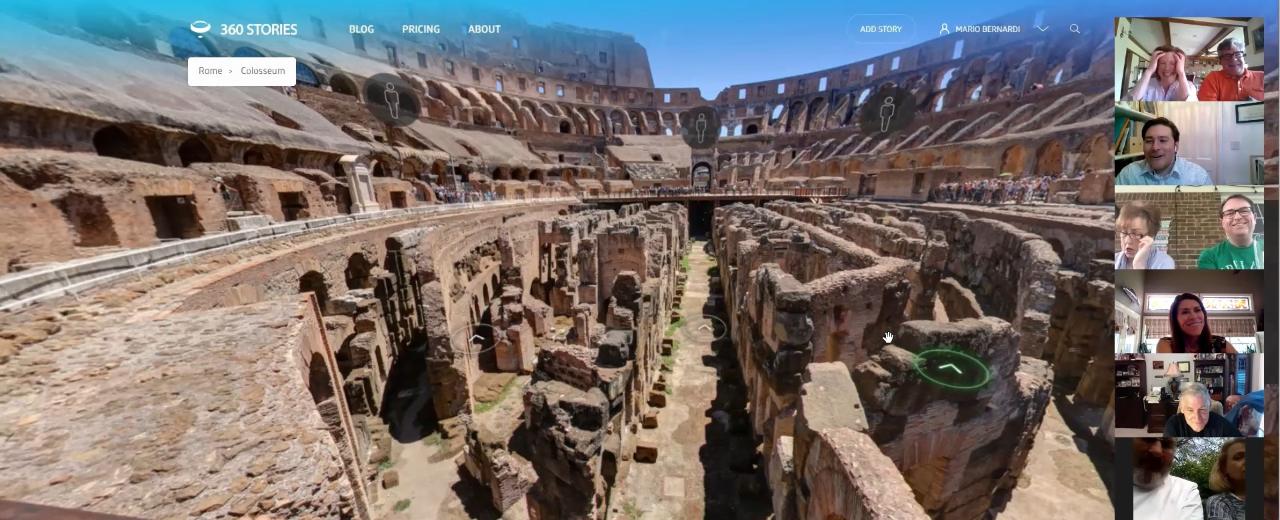
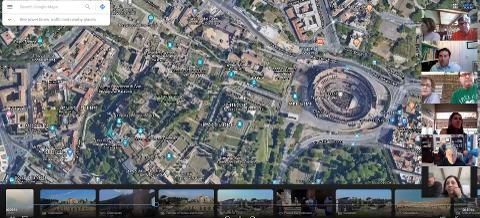

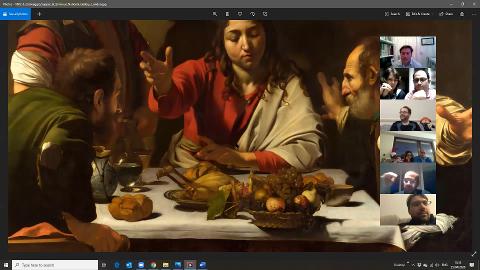
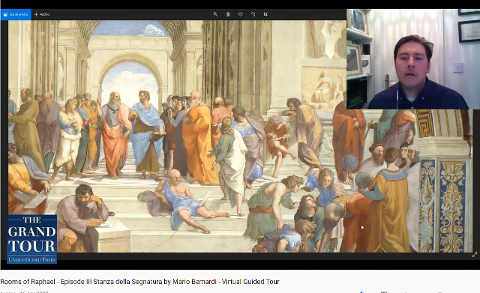
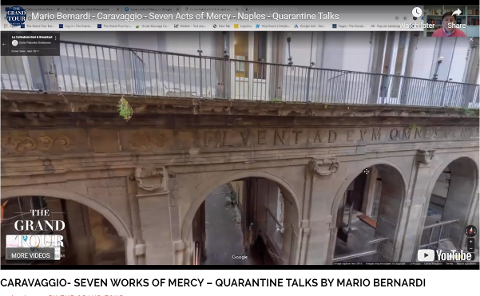
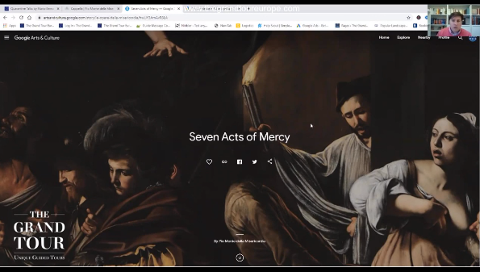

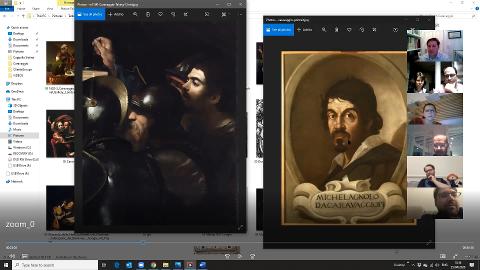
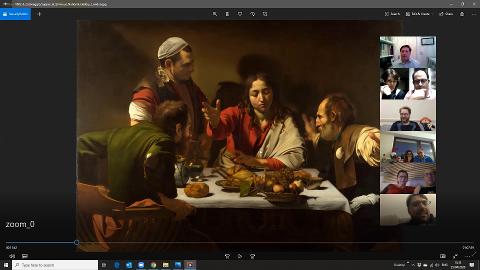
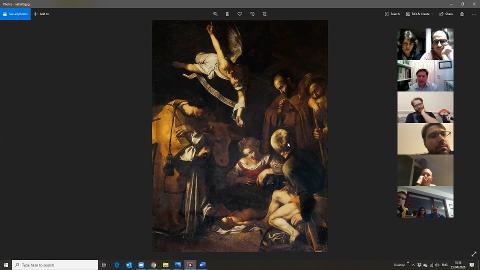
- Продолжительность: 40 мин. (прибл.)
- Код предложения: VIRTUAL99
PRIVATE VIRTUAL EXPERIENCES
Private Virtual Guided Tours of Italy and Europe: Corporate e Social Events for MICE & Clubs
The New Frontier of Cultural Travel Experience! Virtual Guided Tours with an expert Guide using the Zoom App you can connect live, interact, share with your family. Each Guided Tour is about 50 minutes to an hour of LIVE streaming time, you can ask live questions and interact with other participants and at the end take our quiz! It’s a fun and engaging and fun way to spend your time with your Colleagues and a Great Team Building tool where colleagues can learn about Leadership and Challenges in History!
HOW DOES IT WORK?
► Duration: 1 hour – about 50 minutes talk plus time for Q&A
► Cost: from 250 euros total for up to 15 connections, then 10 euros per extra connection.
► Don’t know how many people are going to be joining. Not a problem, just pay the 250 euros deposit then we will charge the balance once the virtual tour is finished based on the actual participants.
► Participants from 1 to 100 (best is between 5 to 25 participants to maximize interaction)
HOW TO USE ZOOM https://support.zoom.us/hc/en-us/articles/201362193-Joining-a-meeting
Watch some of our Free Virtual Experiences on YOUTUBE https://bit.ly/3dE3RhN
We can create many Bespoke Experiences, anyway, these are some of our favorites:
THE VATICAN
The Secrets of the Sistine Chapel
We will enter the Sistine Chapel in the Vatican using an official 3d photographic model that we will be able to navigate as if we were walking inside in person. We’ll have the Chapel all to ourselves and using a mix of high res pictures and other media we will be able to discover the many secrets kept by the Chapel of the Popes. We will talk about Botticelli, Ghirladaio, Perugino and the other early renaissance Masters who worked in the Chapel before Michelangelo's arrival, then we will explore the symbology and the hidden messages int eh frescoes as well as some lesser-known facts and anecdotes! There will be time to interact and to ask questions and then at the end, there will be an online quiz for those you want to test their knowledge of the Chapel!
The Secrets of the Vatican
The Vatican is often synonymous with secrecy, and in fact, there is so much more than meets the eye within its walls, after a brief overview of the history of the Papal State, and how it came to be the world’s smallest country, we will explore with hires photos and 3d photographic models some of the hidden areas of the Vatican: The Masks Room with the Pope’s secret Chair, The Secret Archive, the Tower of The Winds, the Library, the Niccoline Chapel and other rooms that the common visitor doesn’t even suspect their existence just walking in front of closed doors. Lastly, we will explore the Pauline Chapel, Michelangelo’s unknown masterpiece painted just after the completion of the Sistine Chapel Last Judgement for Pope Paul II Farnese. An incredible opportunity to learn all the behind-the-scenes of the Vatican City State!
Saint Peters Basilica, Emperor Constantine and the Origins of Christianity
Saint Peters Basilica in the Vatican is the world’s largest Church and a stark image of the Catholic Roma Church: Baroque splendor, pompous ceremonies, large crowds. But all these grandeur had humble origins: the Tomb of Saint Peter the Apostle originally believed to be a simple earthly burial, later transformed in a red shrine and eventually buried under the large Basilica build by Emperor Constantine, who sought in the new religion a fresh start for a national belief that could unite once more the Romans under a new faith, at a time when nobody believed and worshiped the old gods anymore.
The Rooms of Raphael in the Vatican
In 1508 Raphael started what was going to be his greatest and longest enterprise: decorating the papal Rooms by creating a painted summary of both Theology and History of the Church. Helped by a team of excellent Artists like Giulio Romano, Francesco Penni, Giovanni da Udine, Perin del Vaga, and Many others Raphael used contemporaries like Pope Julius II and Leo X Medici as models for the frescoes, in which he also portraited himself and many other artists. We’ll virtually explore in detail all of the allegories and symbology of the frescoes including some hidden messages and figures, like the daughter of Pope Julius and many other historical and biblical figures.
The Vatican Museums: The collections of the Popes
The Vatican Museums are a complex of more than 20 collections, spanning nearly ten thousand years, from 8 millennia BC vases from the middle east to XX century art, displayed in over 8 km of galleries (5 miles) and about 300 rooms. In this overview, we’ll start from the Pinecone Courtyard, explore the collection of Greek and Roman sculptures, in the Belvedere Complex, including the famous statue of Apollo, the Laocoon and the Belvedere Torso, the statues of animals, the Coffins of St. Helen and St. Constance, the Galleries of Tapestries and the frescoed Maps of all Italy painted in 1585. The Vatican Museums also include a small Egyptian Collection, an important Etruscan Museums, the Portraits from Palmyra, statues from Hadrian’s Villa and many other wonders than we will explore using a number of 3d images, photos and videos and great storytelling to condense it all in a comprehensive but agile virtual experience. Great for both connoisseurs and first timers who want to learn more or just get acquainted with the Vatican and its Museums.
ROME
The Colosseum and the Life of the Gladiators
More than the Roman Forum or the Roman Baths, the Colosseum, and every other Amphitheatre, is now a symbol of the Roman Civilization: and image at the same time of construction and engineering perfection and of brutality and cruelty. This talk will also give us the chance to learn how the Gladiators lived and what was their life like and what was their way of thinking and their social status, besides the ‘legendary’ images created by Hollywood.
The Secrets of the Pantheon
The Pantheon, the Temple dedicated to all the Gods, is one of many buildings that were build under Emperor Augustus to mark the beginning of a new Era, and since then it has become a milestone of architecture and political and religious propaganda. It is if fact the Mother of all Domes, and we will explore its riche history, ceremonies, hidden rooms and parts, including unique images of its inside, and will explore its importance thought the centuries form Brunelleschi to Jefferson, from Alberti to Bernini.
Bernini vs Borromini, the rivalry that shaped Rome
Rome is uniquely associated with the Baroque Art, from Saint Peters Square to the altar of the Basilica, to the many churches and fountains and other urban baroque elements there is no corner of Rome untouched by this unique and controversial style. The Beginning of the XVII century saw two young artists contending to became the new star of baroque art and architecture and d much of the roman baroque is in fact a consequence of their cooperation and rivalry: the more classicist and formal Bernini and the more extravagant and inventive Borromini had about 20 years of challenges and achievements to dominate the eternal city as the leading architect.
The Borghese Gallery and Gardens
The Borghese Gallery, known as the Queen of the Private Art Collections. An exceptional collection of art from the world-famous masters, housed in a Villa that was built in the 1600s, the interior marks is the perfect setting.
unique XVII century collection of Renaissance and Baroque painting, with Ancient Roman and modern sculptures that were originally created by the powerful Cardinal Scipione Borghese. Starting from the top floor, admiring paintings by Raphael, Titian, Botticelli and Perugino, as well as Roman and modern sculptures and coffins. On the first floor discover the stories behind Bernini’s Statues and admire the six Caravaggio Masterpieces, owned by the Cardinal, who did not hesitate to blackmail the painter Cavalier D’Arpino to acquire two of them in the XVII century.
The Myth of Ancient Rome: Augustus and the Fields of Mars
When Octavian Augustus became emperor after the Battle of Actium in 31 BC he had already been using the Story of the Origins of Rome and its mythology to carve a space in it for himself and his family. Historians often say that the winner tells history, but in this case, as, in fact, in many other cases, the man winner is the one with the best story, and this is certainly true for Octavian and the Myth of Rome. We’ll explore how Augustus turned the Fields of Mars and central Rome into an urbanistic celebration of himself and Julius Caesar legacy. The Ara Pacis, the Pantheon, the Horologium and many other urbanistic and architectonical features of the new Rome built for the Emperor blow the Gens Julia horn and celebrate them as the Family born from the sacred blood of the founders to rule Rome and make it the great ruler of the world.
Haunted Rome: Ghosts and Demons of Rome
A Thrilling virtual tour from Castel Sant Angelo to Ponte Sisto, exploringPiazza Navona and Campo de’ Fiori. Retrace the lives of figures like Beatrice Cenci, born into a ruthless and powerful Roman family, who had a tragic end in Rome. Learn about Olimpia Maidalchini, a smart and ambitious woman and sister-in-law to Pope Innocent X with whom she had influence over. She was not especially liked in Rome and was given the nickname ‘Pimpaccia’. Giordano Bruno, who was burned as a heretic by the Roman Inquisition. Discover the lives of Pope Alexander VI, the Borgia, who has always held a controversial status and the King of Savoy Umberto I, who was assassinated by a silk weaving anarchist. The lives of these figures and the places related to them offer unlimited fascinations.
FLORENCE
Botticelli and the Origins of Renaissance in Florence
Florence is known as the crib of renaissance, mostly due to the Patronage of the Medici Family and their wealth so generously invested in art and culture, we will look at the relationship between the artists and the city and the idea of Beauty that especially Botticelli represented in a magnificent way becoming the true icon of Ideal Beauty and Neoplatonism. Power, Money, Philosophy, Religion and Art were uniquely intertwined in Florence XV century to become an epitome of cultural and political development for the centuries to follow.
The Uffizi Gallery – officially Licensed Tour
Originally build as the Offices for the City of Florence, the Uffizi Galleries host today the most important collection of Renaissance art in the world. From Piero della Francesca to Filippo Lippi, from Botticelli to Perugino and Ghirlandaio, from Michelangelo to Titian and Leonardo da Vinci, and many others including Caravaggio, the Uffizi Galleries offers a unique collection of Italian art displayed mostly in a chronological order that makes easy to understand an navigate the various styles of Florentine art thought the centuries and how it became the “School of the World”.
NAPLES
In the Belly of Naples: Stories and Art from an Ancient city
A virtual tour through some of the most precious hidden treasure of Naples, starting from the Pio Monte della Misericordia, which was founded by seven young people from Naples in 1601. The historical palace and the church built in the XVII century, still preserve a wide artistic heritage. Among them is one of the best-known masterpieces of Michelangelo Merisi da Caravaggio, as well as a rich group of paintings from different schools and periods. We will continue discovering the Via dei Tribunali which is similar to the old Decumanus, the old Roman city main road, and we will visit some masterpieces hidden in the churches of central Naples, such as “Christ Driving the Merchants from the Temple” by Luca Giordano in the Girolaminis church, the Madonna dell’Arco, the paintings by Mattia Preti in the church of S. Pietro a Majella, the incredible Veiled Christ by Sammartino and the Sansevero Chapel, and incredible masterpiece of the architecture and sculpture of XVIII century late Baroque Art.
Naples Underground: Stories from Beneath the City
There are over 10 catacombs that still exists in Naples, the most famous are the Catacombs of San Gennaro which date back to the 2nd Century. Starting with the Catacombs of San Gennaro, under the Sanitá district, are the largest Catacombs in southern Italy. They cover around 5600 square meters and they are home to the remains of San Gennaro, the patron saint of Naples. The catacombs are arranged on two levels, with the lower one dating back to the first and second centuries. San Gennaro catacombs are known for frescoes and the “Crypt of the Bishops”, where some Neapolitan bishops are buried.
The catacombs of San Gaudioso were lost for centuries: they were rediscovered when Dominicans began the construction of Santa Maria della Sanitá Church in 1601. The actual burial site dates back to the fifth century. Although not the largest catacomb it has an impressive collection of 5th and 6th century mosaics and an interesting insight into the burial practices that took place. Finally, visit the Fontanelle cemetery. Located in a cave in the hillside, it was built to as a place to put bodies that had already been interred in local churches, to make room for the newly dead to rest in their local churches within the city walls. In 1656 victims of the plague were to also join them, before becoming a paupers’ cemetery in the later centuries.
The Royal Palace of Caserta
Build to rival Versailles the Royal Palace of Caserta is the most beautiful Palace in Europe, originally to rival Versailles, which was its model, it definitely surpassed it in elegance and style. Designed by Luigi Vanvitelli for the King Charles the Bourbon of Naples, who lately became Carlos III of Spain, leaving his throne to is son Ferdinando, it has over 1200 rooms and had a 2 miles long gardens decorated with fountains adorned by statues inspired by classical mythology.
Pompeii: the buried lives - officially Licensed Tour
When the Vesuvius Volcano erupted many citizens of Pompeii tried to escape, but others seek refuge in their building and remained trapped with their belongings for centuries. Today over two-thirds of the city have been excavated and the bodies of those Pompeiians have been found, telling us their story, together with their houses, their temples, their thermal baths and thousand of objects, artefacts, statues, frescoes, mosaics. We will explore Pompeii in a narrative way bring back to life the Pompeiians and their stories up to their tragic end.
SICILY
Agrigento and the Valley of Temples
Agrigento was founded by the Greeks in Sicily with the name of Akagras, as in a nearby river there were crabs from which the city derives its name. Later became the roman Agrigentum and in the middle ages what was left of the inhabitants moved to the highest part of the ancient city creating the town of Girgenti. Protected by a long wall the city's pride were its temples, some among the largest ever built in the ancient world. Now, this area is known as the Valley of the Temples and it's a Unesco world heritage site. We will discover its story and monuments with 3d models and reconstructions, and we will be able to virtually enjoy the history and the atmosphere of this magnificent Sicilian gem!
Palermo: Phoenicians, Greeks, Arabs and Normans
Palermo is a unique melting pot of Mediterranean cultures across over 28 centuries: founded by the Phoenicians with the name of Ziz, was then taken by the Greeks and the Romans, who called it Panormus. During the Middle ages between the IX and the XII century, Palermo was the capital of the Emirate of Sicily during the Arab conquest. When the Normans conquered the Island Palermo became the capital of their kingdom which lasted only under a century but became a rich cultural center where Byzantines, Christians, Arabs, and Jews lived, worked, and thrived together. As a result of this unique mixture, some great buildings are still preserved today: the Palazzo dei Normanni, Europe's oldest parliament still in use, with is glittering Cappella Palatina, a Christian chapel with Islamic decorations and byzantine decorations, its a feast for the eyes and the soul. Churches, palaces, music, and food in Palermo everything tells still today the story of the great Normans who ruled on many cultures as one. We will explore the Cathedrals of Palermo, Cefalú, and Monreale as well d the Cuba and Cubula the magnificent leisure villa surrounded by exotic gardens and waters.
VENICE
The Secrets of Venice: Casanova and his time
Giacomo Casanova is always associated with the libertine image of the seducer, but he was an extremely cultivated man, a resourceful, experienced traveler, and a great storyteller, skill that he used to get always ahead of his misfortunes. We will follow some key moments of his life, from the humble beginnings to his career as a priest in Rome, which, as you can imagine, didn’t last long and definitely did not end well… because of a girl! He traveled extensively throughout Europe to Paris, London, Germany, Russia, Poland, Spain… collecting hearts and often ending up imprisoned or banished. A great personality with many skills and many facets still to be discovered, like being an excellent writer, he wrote many books including a Sci-Fi novel and many other things that contributed to creating the myth of Casanova.
GREAT ITALIANS
Leonardo da Vinci, the Genius
Michelangelo the pursuit of Fame
Raphael Sanzio of Urbino
Caravaggio: The Anabasis of the Soul
Vivaldi the sound of Venice
Titian, the Master of Colour
The Bold and Furious: Tintoretto in Venice
Andrea Palladio and the Venetian Renaissance
Antonio Canova or the Ideal Beauty in Marble




